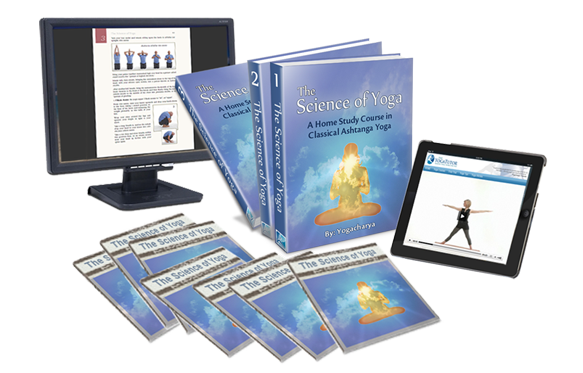[ Excerpt from The Science of Yoga, page 449 ]
In the Sanskrit language, paschima means "back" or "west." Various teachers commonly attribute the remaining root of this word as related to utthana, which can itself have various meanings, such as "raising up," "upward," "extended" or "intense stretch." Swami Gitananda suggests that it is the word mottana that is being implied here, which means to "give mobility to the spinal cord (tan) by stretching." In that case, this asana can be rightly known as the "back stretch pose" or the "extreme posterior (spinal) stretch."
Pischimottana asana is a commonly practiced technique in yoga. However, to be correctly executed, it requires a great deal of flexibility in the hips as well as in the muscles of the lower back and the legs. Thus, a fair amount of preparatory work is required before one can rightfully benefit from its practice, which is why you are only just now, after months of previous practices, being properly introduced to it.
Technique
- From shava asana, inhale slowly and perform the yogic sit-up, coming into a seated position on the floor with your legs stretched straight forward and together.
- Exhale fully.
- Inhale again (to a 6 count) and raise the arms in a wide arc into danda asana.
- Hold the breath briefly while you interlock your fingers, turn the palms upward and stretch the arms high overhead.
Note: Feel the “elongating stretch” from the tip of your tailbone, right through the entire spine, shoulders and arms to the hands.
- Continue to hold your arms fully stretched upwards while you release your hands and turn the palms to face forward.
- With a controlled exhalation, slowly bend forward at the waist, keeping your arms and entire spinal column as straight and extended as possible.
- Allow your hands to grasp as far down the legs as possible
Note: The legs must remain perfectly straight. Therefore, if flexibility is limited, reach only as far forward as possible.
- Relax the head, arms and entire upper torso for a moment.
- Maintaining your grip/hand positions, inhale, lift the head and straighten (fully extend) the spine.
- On the next exhalation, once again allow your head, arms and upper torso to relax downward on top of the thighs, this time feeling that the spine is fully extended and stretched to its maximum.
- Come out of the posture in the reverse manner.
- Extend the arms, inhale and come up to danda asana.
- Exhale, slowly bring the arms down (in a wide arc), placing the hands upon the floor beside the hips, and lower the spine back down on to the floor, segment by segment.
- Remain in shava asana for a few relaxing breaths.
Effects and Benefits
Paschimottana asana is considered one of the most potent and powerful asanas in the hatha yoga tradition, and the list of benefits from its practice is long.
Because of its immense value, in some yogic texts it has been referred to as the 'formidable pose'. The Hatha Yoga Pradipika (1.29) calls it the foremost of all asanas...
[Continued...]
DISCLAIMER:
The contents of this web page are intended for informational purposes only. One should not engage in any yoga practices based solely upon the directions given on this web page or any other page of this web site. Anyone atempting to perform any of the yoga exercises introduced on this website assumes full responsibility and does so at their own risk.
---------------------
NOTE: This yoga article is an excerpt from The Science of Yoga, an online yoga training program with streaming yoga videos and 600 pages of step-by-step yoga instruction.

"The Science of Yoga is a course worthy of
leather binding and an honored place in the
finest libraries in the world
... It is indeed a masterful work."
Dr. John Michael Christian
AwakeningWithYoga.com
Learn More About
The Science of Yoga Course
|







